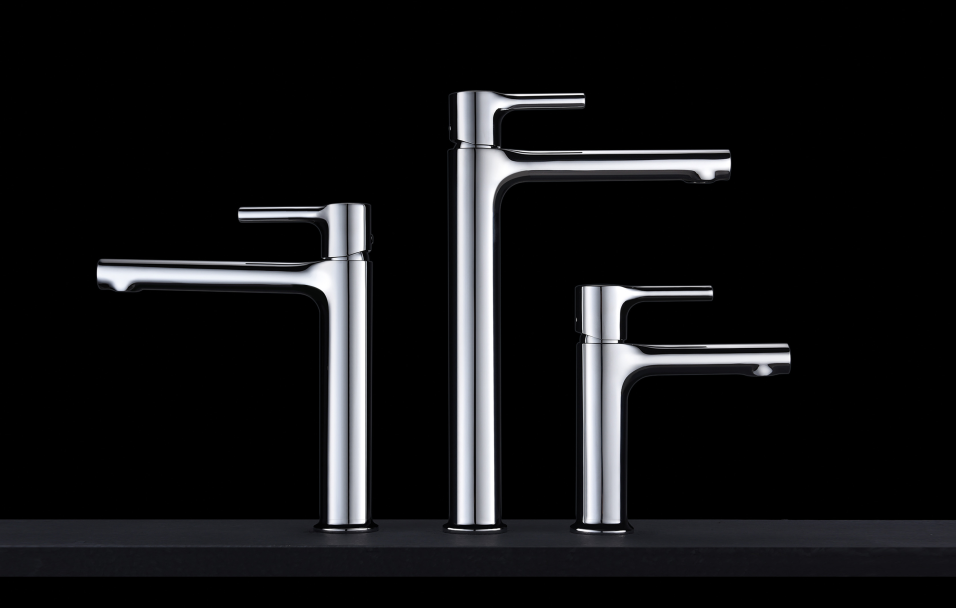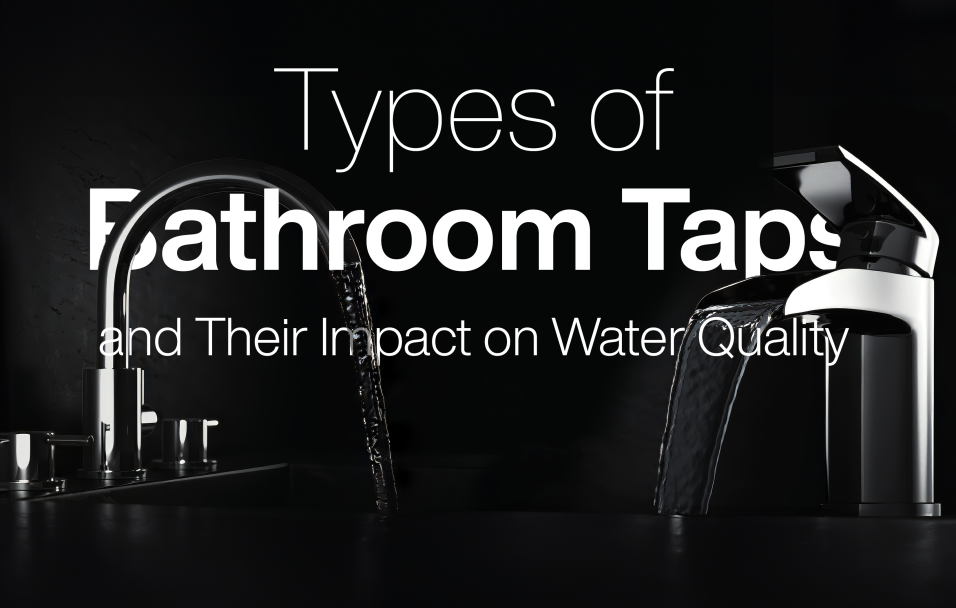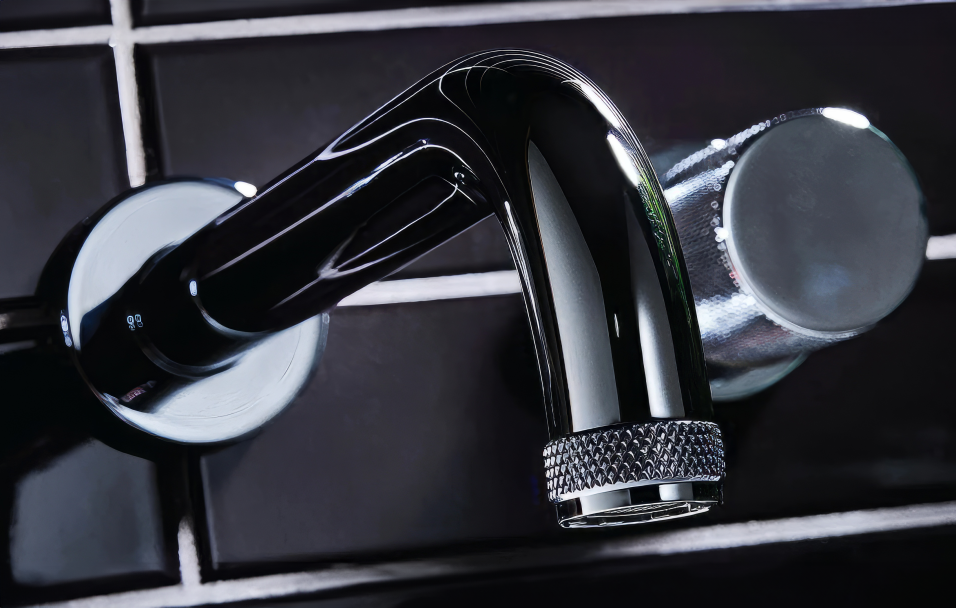| Tags | walk-in bath bath easy riser montana priya tray sizes anti-slip shower tray sizes shower tray freestanding baths geberit aquaclean aquaclean carron corner bath carron baths show all posts |
Can You Drink Bathroom Tap Water? Here's What You Need to Know
Have you ever found yourself thirsty in the middle of the night, wondering if it's safe to grab a quick drink from the bathroom tap? You're not alone. Many people ask themselves this question, especially when they're in unfamiliar places or have concerns about their home's water quality. In this blog post, we'll dive deep into the question of bathroom tap water safety. We'll explore the factors that influence water quality and provide you with the information you need to make informed decisions about drinking from your bathroom tap. We'll also guide you through choosing the right bathroom taps that not only look good but also ensure the water flowing through them is safe for consumption.
Understanding the Safety of Bathroom Tap Water
The safety of bathroom tap water isn't a straightforward yes or no answer. It depends on several factors, including the plumbing in your home, the quality of your local water supply, and even the type of tap you have installed. These elements all play a role in determining whether the water coming out of your bathroom tap is safe to drink. To get a clear picture of whether your bathroom tap water is safe to drink, we need to look at several key factors that influence its quality.
Factors Influencing the Safety of Bathroom Tap Water
Local Water Quality:
- The safety of your bathroom tap water starts with the quality of water in your local area. Water quality can vary significantly from one region to another and even between neighbourhoods in the same city.
- In the UK, for example, water companies are required to meet strict standards set by the Drinking Water Inspectorate. However, the source of your water (whether it's from rivers, reservoirs, or underground aquifers) can affect its taste and mineral content.
- Some areas have naturally hard water, which contains higher levels of minerals like calcium and magnesium. While these minerals aren't harmful, they can affect the taste of your water and potentially lead to limescale build-up in your pipes and appliances.
- Other regions might have softer water, which can sometimes have a slightly different taste due to its lower mineral content. In rare cases, local water supplies might be affected by contaminants from industrial or agricultural activities, although water companies are required to treat and test the water to ensure it meets safety standards.
Plumbing System:
- Even if the water entering your home is perfectly safe, the plumbing system in your house can have a significant impact on the quality of water that comes out of your taps.
- Older homes might have lead pipes, which can leach lead into the water. Lead is particularly dangerous, especially for children and pregnant women, as it can cause serious health problems. If you live in an older property, it's worth checking what material your pipes are made from.
- Copper pipes, while generally safe, can sometimes impart a metallic taste to water, especially if the water has been sitting in the pipes for a long time. This is more likely to happen with hot water, which is why it's generally recommended to use cold water for drinking and cooking.
- Rusty pipes can also affect water quality, giving it a reddish-brown tint and an unpleasant metallic taste. Regular maintenance of your plumbing system is crucial to ensuring the water flowing through your pipes remains clean and safe.
Tap Type:
- The type of tap you have in your bathroom can also play a role in water safety. Some modern taps come with built-in filtration systems that can remove impurities and improve taste.
- Standard taps without filtration rely entirely on the quality of water coming through your pipes. They don't provide any additional treatment, so the water you get is exactly the same as what's flowing through your plumbing system.
- Taps with integrated filters can remove chlorine, sediment, and some contaminants, potentially improving both the taste and safety of your water. However, these filters need regular replacement to remain effective.
Why Bathroom Tap Water Might Differ from Kitchen Tap Water
When it comes to tap water in your home, you might assume that all taps are created equal. However, there are a few reasons why the water from your bathroom tap might be different from what you get in the kitchen.
Distance from Main Supply:
- In many homes, bathroom taps are often further away from the main water supply than kitchen taps. This longer journey through your home's plumbing system means the water has more opportunities to pick up contaminants or lose quality along the way. The extra distance can also affect water pressure and temperature, which might influence your perception of its quality.
Water Storage Tanks:
- Some homes, especially older ones, use water storage tanks in the loft to supply bathrooms. These tanks can lead to water sitting for longer periods, which might affect its taste and quality. Stagnant water in tanks can potentially develop bacterial growth if the tank isn't properly maintained or cleaned regularly. In contrast, kitchen taps are often connected directly to the mains supply, providing fresher water.
Pipes and Plumbing:
- Bathrooms in older homes might have older pipes compared to more recently renovated kitchens. Older pipes can be made of materials that are more prone to corrosion or leaching, potentially affecting water quality. For example, if your bathroom still has lead pipes (common in houses built before 1970), this could pose a health risk. Kitchens, being high-traffic areas that are often updated more frequently, might have newer, safer plumbing.
Types of Bathroom Taps and Their Impact on Water Quality
The type of tap you have in your bathroom can significantly influence the quality of water you get. Let's look at some common types and their potential impact on water quality.
Common Types of Bathroom Taps
Traditional Taps: Traditional taps are the most basic type you'll find in many bathrooms. They typically have separate hot and cold water controls and don't offer any built-in filtration. These taps are usually made from materials like brass, stainless steel, or chrome-plated metal.
While these materials are generally safe, they can sometimes impart a slight metallic taste to water, especially if it's been sitting in the pipes for a while. Brass taps might contain small amounts of lead, which could leach into the water over time. However, modern brass taps are usually treated to prevent this.
Mixer Taps: Mixer taps have become increasingly popular in bathrooms. They combine hot and cold water streams before the water exits the spout, allowing for easy temperature control. While mixer taps offer convenience, they can pose a potential risk if one of the water sources (usually the hot water) is contaminated.
For instance, if your hot water tank is contaminated with bacteria, mixing it with cold water in the tap could spread that contamination to what would otherwise be safe drinking water. It's generally safer to use cold water for drinking, even from a mixer tap.
Filtered Taps: Some bathroom taps come with built-in filters designed to improve water quality. These filters can remove impurities like chlorine, sediment, and some contaminants, potentially making the water safer to drink and improving its taste.
However, it's important to remember that these filters need regular replacement to remain effective. If not maintained properly, they can actually become a breeding ground for bacteria, potentially making your water less safe.
Practical Tips for Ensuring Your Bathroom Tap Water is Safe to Drink
If you're concerned about the safety of your bathroom tap water, there are several practical steps you can take to check its quality and improve it if necessary.
Testing Your Bathroom Tap Water
Water Quality Testing Kits: Home water testing kits are readily available and can be a good starting point for assessing your water quality. These kits typically test for common contaminants like lead, bacteria, pesticides, and chlorine.
To use a home testing kit, you'll usually need to collect a water sample from your bathroom tap in a provided container. Some tests require you to dip a test strip into the water and compare the colour change to a chart, while others might involve adding a reagent to the water sample.
Remember that while these kits can give you a general idea of your water quality, they might not detect all potential contaminants and their accuracy can vary.
Professional Water Testing: For a more comprehensive and accurate assessment of your water quality, consider professional testing. Many local water authorities offer testing services, often for free or at a low cost. Private laboratories also provide detailed water analysis.
Professional testing can detect a wider range of contaminants and provide more precise measurements than home testing kits. They can also help identify specific issues with your plumbing system that might be affecting water quality.
Simple Steps to Improve Water Quality
Regular Cleaning of Taps:
- One simple yet effective way to improve your tap water quality is to regularly clean your taps, especially the aerators and nozzles. These parts can accumulate mineral deposits and bacteria over time.
- To clean your tap, unscrew the aerator (the small screen at the end of the tap) and soak it in vinegar for a few hours to remove mineral build-up. Scrub it gently with an old toothbrush, rinse thoroughly, and reattach. For the tap body, wipe it down regularly with a mild soap solution to prevent bacteria accumulation.
Installing a Filtration System:
If you're concerned about your water quality or simply want to improve its taste, consider installing a filtration system. There are several options available:
- Tap-mounted filters: These attach directly to your tap and filter water as it comes out. They're relatively inexpensive and easy to install but may not be compatible with all tap types.
- Under-sink filters: These systems are installed beneath your sink and typically provide more thorough filtration. They require more space and a bit more DIY skill to install, but they don't affect the look of your tap.
- Whole-house filtration systems: These filter all the water entering your home. They're the most comprehensive option but also the most expensive and complex to install.
Upgrading Your Tap:
If your current tap is old or you're looking for better water purification features, consider upgrading to a modern tap. Many new models come with built-in filtration systems or other water-purifying technologies.
Look for taps with features like:
- Built-in carbon filters to remove chlorine and improve taste
- UV-C purification to eliminate bacteria and viruses
- Smart sensors to monitor water quality and filter life
Conclusion
Throughout this blog, we've explored the various factors that affect the safety of bathroom tap water and the steps you can take to ensure its quality. Let's recap the key points:
- The safety of bathroom tap water depends on factors like local water quality, your home's plumbing system, and the type of tap you have.
- Bathroom tap water might differ from kitchen tap water due to factors like distance from the main supply and the presence of water storage tanks.
- Different types of taps, from traditional to high-tech options with built-in purification systems, can impact water quality.
- Regular testing, cleaning, and maintenance of your taps and plumbing system are crucial for ensuring safe drinking water.
- Installing a filtration system or upgrading to a modern tap with purification features can significantly improve water quality.
Remember, while many areas have safe tap water, it's always worth taking steps to ensure the water you're drinking is as clean and safe as possible. Consider implementing some of the safety tips we've discussed, such as regular cleaning and water testing.
If you're thinking about upgrading your bathroom tap, explore the range of options available that combine style with advanced purification features. A new tap could not only enhance the look of your bathroom but also provide you with cleaner, safer water.
We invite you to check out our selection of high-quality bathroom taps that offer both aesthetic appeal and advanced water safety features. Whether you're looking for a simple, elegant design or a high-tech smart tap, we have options to suit every need and preference.
Don't compromise on the safety of your drinking water. Invest in a tap that gives you peace of mind every time you turn it on.








